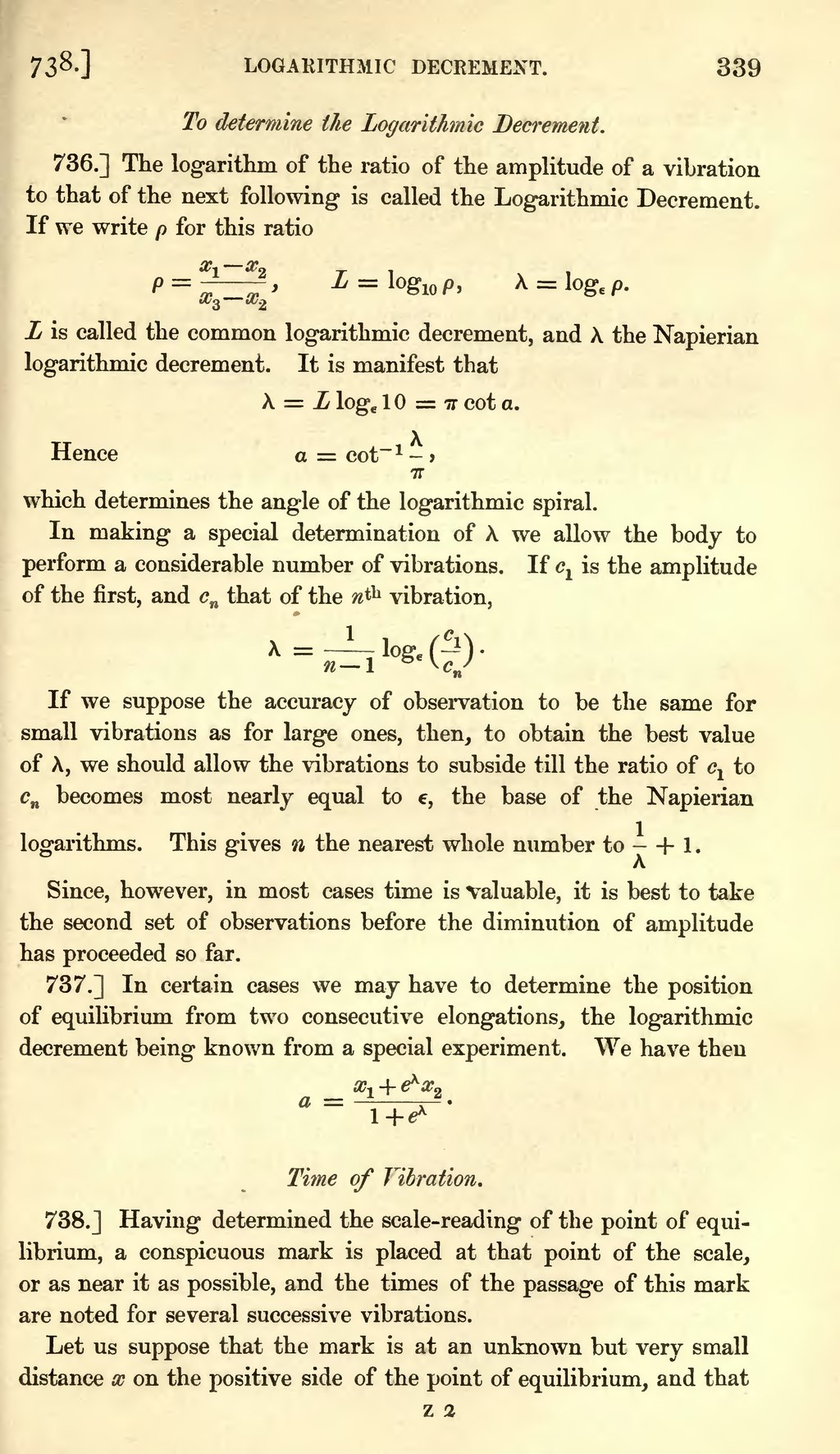To determine the Logarithmic Decrement.
736.] The logarithm of the ratio of the amplitude of a vibration to that of the next following is called the Logarithmic Decrement. If we write for this ratio
, , .
is called the common logarithmic decrement, and the Napierian logarithmic decrement. It is manifest that
.
which determines the angle of the logarithmic spiral. In making a special determination of we allow the body to perform a considerable number of vibrations. If is the amplitude of the first, and that of the th vibration,
.
If we suppose the accuracy of observation to be the same for small vibrations as for large ones, then, to obtain the best value of , we should allow the vibrations to subside till the ratio of to becomes most nearly equal to , the base of the Napierian logarithms. This gives the nearest whole number to .
Since, however, in most cases time is valuable, it is best to take the second set of observations before the diminution of amplitude has proceeded so far.
737.] In certain cases we may have to determine the position of equilibrium from two consecutive elongations, the logarithmic decrement being known from a special experiment. We have then
.
Time of Vibration,
738.] Having determined the scale-reading of the point of equilibrium, a conspicuous mark is placed at that point of the scale, or as near it as possible, and the times of the passage of this mark are noted for several successive vibrations.
Let us suppose that the mark is at an unknown but very small distance on the positive side of the point of equilibrium, and that
















